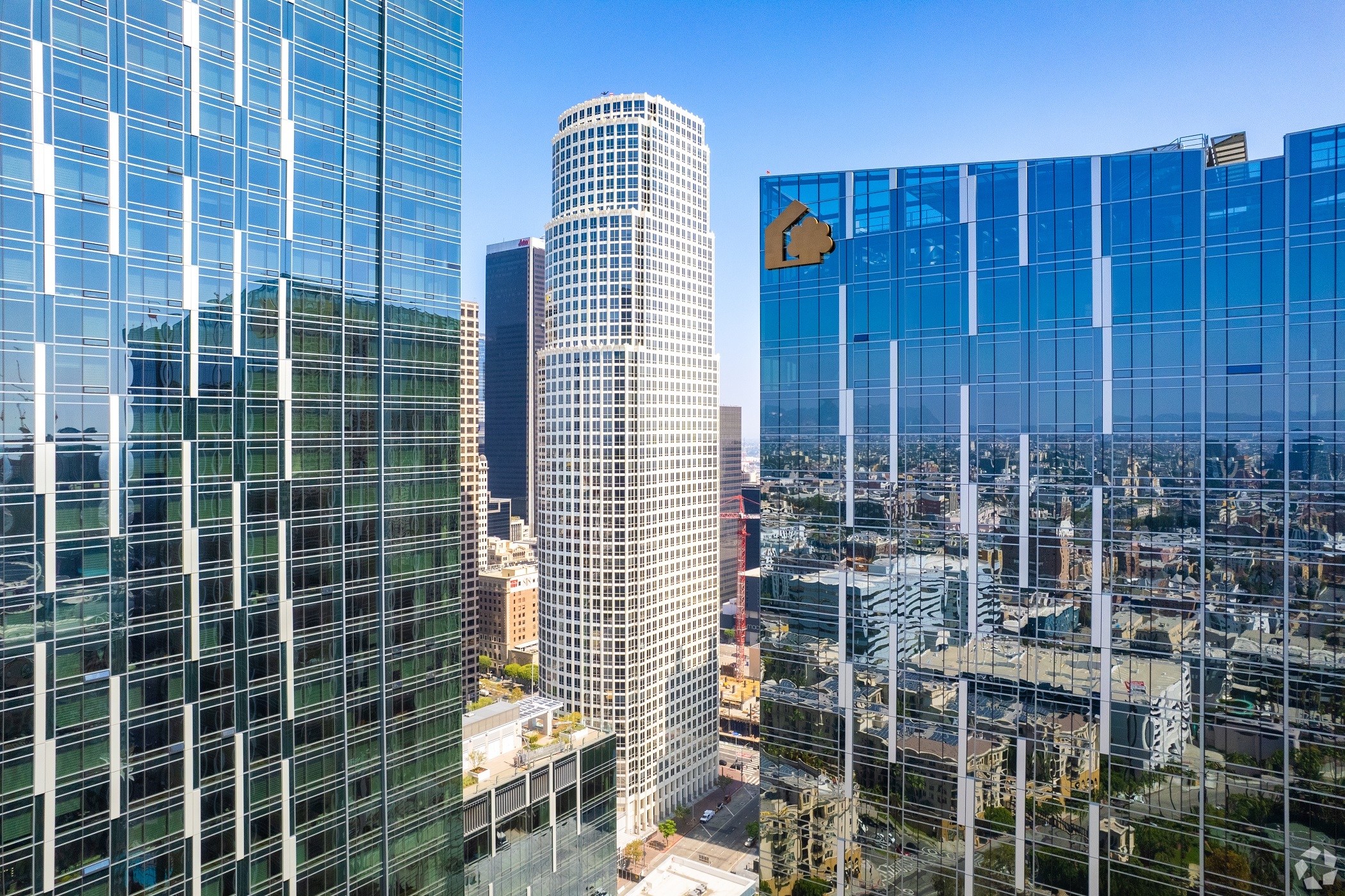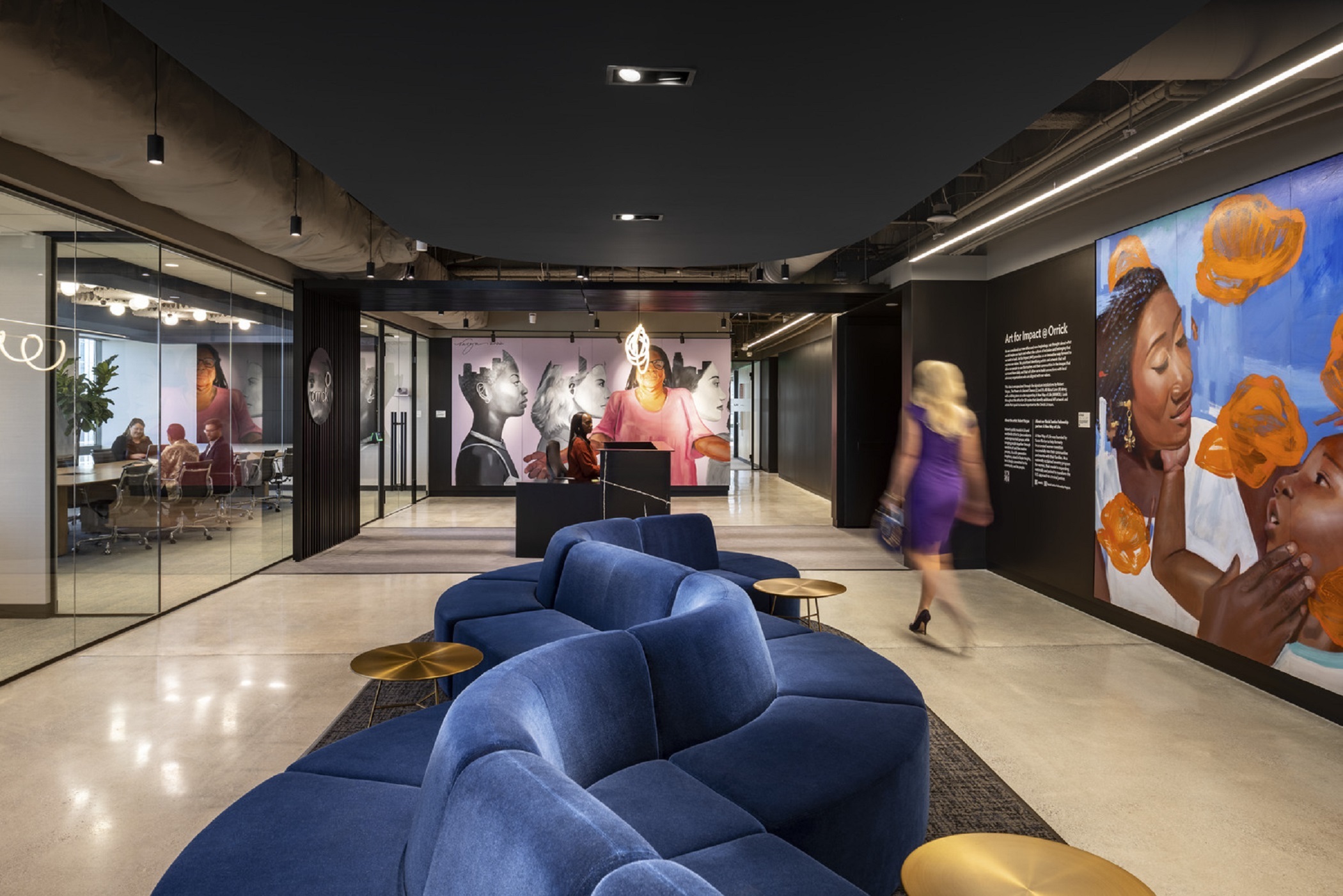Three Years After Pandemic’s Start, Some LA Towers Face Foreclosure

By Jack Witthaus
CoStar NewsMarch 19, 2023 | 1:25 P.M.
Keeping a major tenant came at a cost for a high-profile office owner in downtown Los Angeles.
Brookfield DTLA Fund Office Trust Investor knew in 2018 that the lease held by a tenant, the law firm Orrick, in its 777 Figueroa St. tower was expiring in 2022 and the future was uncertain, according to a regulatory filing. The landlord managed to persuade Orrick to lease offices in another building it owned — but the law firm had switched to hybrid work and only needed about one-third of the 66,000 square feet it had been leasing.
Orrick’s relocation to smaller space was a blow for Brookfield DTLA, coming as more than a half million square feet of leases the building owner said in 2022 were expiring across its holdings. Last month, Brookfield DTLA said it defaulted on loans tied to that building and another 52-story property, the Gas Company Tower about a half-mile away. Those defaults could signal pain to come for the 69-million-square-foot downtown L.A. office market, the largest concentration of that property type in the second-biggest U.S. city.
The fallout is arriving three years after the start of the pandemic, which resulted in millions of people working from home and reduced office demand across the United States. Los Angeles is illustrative of the disruption in many major cities, with the average price per square foot for the city’s downtown offices rated four or five stars so far in the first quarter at $242, according to CoStar data, less than half the $523 of three years earlier.
Real estate analysts say the market’s office property foreclosures and sales may take years to unravel as tenants discover how much space they actually need and landlords and lenders sort out how the deals will pencil out.
“It’s an interesting time,” said Dave Wald, president of real estate firm Wald Realty Advisors in Los Angeles, “unless you’re an investor, lender or sponsor of an office building. Then it’s probably horrific.”

To be clear, not every office building will run into issues in downtown Los Angeles. That’s especially true for newer buildings and those with amenities and space that tenants desire, including gyms, outdoor meeting spots, indoor air quality monitoring systems and rooftop decks. Shifting preferences in downtown L.A. also may create opportunities for other types of uses, such as residential.
Sales, Foreclosures
Even so, Brookfield DTLA’s pain resonates with another large office owner nearby in downtown Los Angeles: Newport Beach-based real estate investment firm KBS.
KBS has been trying for months to sell its 40-story, roughly 701,000-square-foot Union Bank Plaza office tower at 445 S. Figueroa St. near downtown’s financial district neighborhood. Real estate analysts have been tracking the deal to get a read on the health of downtown L.A.’s office market, and its potential sale may help set the value of other downtown office buildings looking to be sold.
So far, the negotiations haven’t been promising. KBS has been in talks, and extending those conversations, to close a saleto New York-based private equity firm Waterbridge Capital since July 2022, according to filings with the Securities and Exchange Commission. As recently as March 9, the seller gave the buyer another week-long extension with no end to the negotiations in sight.
The sale could come at a loss: KBS Realty spent $208 million on the now 56-year-old tower in September 2010, according to CoStar data. But the landlord plans to sell the building for $155 million, or about $221 per square foot, to Waterbridge Capital if the deal can close, according to the SEC filing. That price per square foot is nearly half of downtown L.A.’s office market average.
Union Bank Plaza joins a number of high-profile office sales that have yet to close in downtown Los Angeles from the 62-story Aon Center, downtown’s third-tallest building, to the historic 464,000-square-foot PacMutual, a three-building property with its earliest construction dating back to 1908.
Downtown office properties hitting the market come at a time of weakening investor demand. Since March 2020, five properties with more than 100,000 square feet of office space have sold in downtown Los Angeles, according to CoStar data, down from the 11 traded in the prior three years.
The sluggish sales come as downtown office vacancy has risen to 18.7%, the highest level CoStar has recorded. That said, the market was hurting long before the pandemic with high vacancies and less-than-robust leasing activity.
Downtown L.A.’s vacancy is higher than the New York office market’s average vacancy of 12.8%, Chicago’s average of 15.6% and San Francisco’s average of 17.2%. Overall, the average office market vacancy in Los Angeles is 15.1%. The U.S. office vacancy rate is 12.9%, higher than 9.5% at the end of 2019 and the completion of the last full quarter before the pandemic.
Those higher vacancy rates are even hitting traditionally desirable, high-end buildings. The 777 Tower, with a marble-clad lobby and 30-foot ceilings, for instance, was designed by Cesar Pelli & Associates and is located near a mall and a Metro stop in the downtown’s financial district. CoStar Group is a tenant in 777 Tower.
Some owners who can wait aren’t trying to sell right now in downtown Los Angeles. Office and studio space owner Hudson Pacific Properties yanked its roughly 130,000-square-foot Fourth & Traction creative office space off the market, CEO Victor Coleman said Feb. 9 in a quarterly earnings call.
Coleman said the company hasn’t looked at bringing the buildings backto market.
Sean Fulp isn’t surprised at what’s going on with downtown Los Angeles office buildings.
The vice chair and head of Southwest office capital markets for Colliers has seen the downtown office market struggle through down economic cycles. Fulp said there haven’t been too many winners on bets made on downtown office buildings over the years, and history is repeating itself again in recent months after working from home cut demand for office space.
Now, owners in the downtown office market are seeking help from lenders who are wary of investing in the urban core, Fulp said. For one, investors don’t want to look bad and make another mistake lending on downtown office properties that have a mixed history, he added.
On top of that, office vacancies are at historic highs in L.A.’s downtown, another bad sign for investors. Further, rising interest rates, a new tax on commercial properties that sellin Los Angeles, perceived crime and a lack of cleanliness downtown are among a growing list of factors making lenders skittish about urban core office space.
“If they’ve got a blemish on their track record, they’re not going to want that to happen twice under the same business plan,” Fulp said about lenders for downtown Los Angeles office space.
Over the past year, landlords sought to lure more tenants by rolling out incentives, including Rising Realty’s $1 million bonus to brokers who completed a deal for 100,000 square feet over 10 years at the Trust Building. Brookfield offered a free month’s apartment rent at some of its multifamily properties to office users renewing or leasing space in downtown L.A.
Measures like these had limited success. Now, distressed landlords short on cash may not be motivated to spend money on improving office spaces and amenities to woo tenants, real estate analysts said. Landlords may simply be too preoccupied with issues related to loans to focus on tenants.
“The math on how much new equity a landlord needs to come up with in order to hold onto the property and lease it back up just doesn’t pencil today,” said Priyesh Bhakta, president of Los Angeles-based lender Hankey Capital.
On the other side of the equation, tenants have to ask themselves if it’s worth inking a low-price deal in a distressed building downtown. Tenants have many office options across greater L.A., including potentially buying buildings. Plus, tenants don’t want to get stuck in a situation where they’re one of a few companies left in an empty office.
“You don’t want to be in that building,” Wald said. “It’s creepy.”
What’s Next
There’s no one-size-fits-all answer for what will happen to distressed office buildings in downtown Los Angeles.
But Bhakta said it’s likely that lenders for these properties don’t want to operate them since they’re in the borrowing business, not the operating real estate business. That means lenders and office owners will go head to head at the negotiating table and put together plans to give office owners more time to navigate the uncertainty.
“The right path out completely depends on the quality of the building, attractiveness of the location of the property and the creditworthiness and capabilities of the borrower,” Bhakta said.
Alan Todd, Head of CMBS Research, BofA Global Research, said the distressed office market these days reminds him of what has been happening with distressed malls in recent years. Similar to retail, conversations between borrowers and lenders around distressed office properties will take time. Putting together a plan alone could take months or longer. Selling a property may take years.
Time may be in the best interest for office owners and lenders as it may allow for more opportunity for the market to recover, Todd said.
“In commercial real estate, time is your friend,” Todd said.
Ultimately, real estate analysts said that office vacancy downtown has some positive aspects. Vacancy may lure a company that wants to create an urban headquarters in Los Angeles, or some distressed offices may be converted into much-needed housing. Other vacant offices could become future educational campuses and healthcare centers.
Jessica Lall, the managing director of CBRE that oversees downtown L.A.’s office, said downtown office space is experiencing a variety of issues right now, causing distress. But before the pandemic, downtown Los Angeles was transforming from a 9-to-5 office market into a place where people wanted to live, work and play.
New restaurants were opening, while apartment towers were being built and leased, leading to a surge of new residents downtown. Los Angeles’ downtown population continues to grow, from 78,000 in 2020 to roughly 90,000 now, according to a statement by the Downtown Center Business Improvement District.
The downtown’s population may reach 100,000 after the current construction of residential projects is complete, the organization said.
Lall said she’s optimistic about downtown L.A.’s future. Improvements are on the way to downtown’s transportation systems in coming years, including a regional connector project and new stops on L.A. Metro. Plus, downtown will play a role in hosting World Cup soccer matches in 2026 and the Olympics in 2028.
“Now is a great time to invest in downtown,” Lall said, “if you’re able to withstand the next couple of years.”
(Posted with permission from CoStar)
